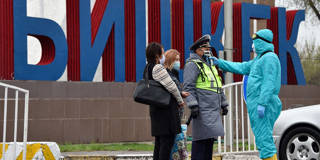Having recognized the COVID-19 threat early on, some of Central Asia’s governments were slow to prepare for the coronavirus’s eventual arrival. And with the pandemic’s biggest, mainly economic challenges still to come to the region, the real problems may lie ahead.
BISHKEK – COVID-19’s impact on my country, Kyrgyzstan, first hit home for me on March 19, when my son arrived at Bishkek’s international airport from a “highly infected” European country. I was unable to see him because, along with several dozen others who arrived on the flight with him, he was immediately subjected to a 14-day quarantine at a former American military base that the United States donated to the country in 2014.

BISHKEK – COVID-19’s impact on my country, Kyrgyzstan, first hit home for me on March 19, when my son arrived at Bishkek’s international airport from a “highly infected” European country. I was unable to see him because, along with several dozen others who arrived on the flight with him, he was immediately subjected to a 14-day quarantine at a former American military base that the United States donated to the country in 2014.